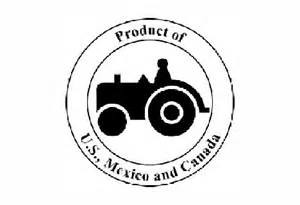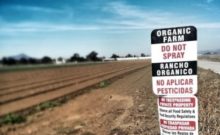 Where Does Your Food Come From?
Where Does Your Food Come From?
Many people rejoiced when the United States passed the country-of-origin bill. This was a big step in creating a world of food transparency. For a decade, consumers were informed where their meat was raised and processed. “In 2013, the Consumer Federation of America found that nearly 90% of Americans favor country-of-origin labeling on their meat products. Cited by many as a “common sense” practice in line with the call for more transparency in all aspects of the food and agriculture industries, this issue goes far beyond one of food safety.” (Andrea Ditter-Middleton, 2016) So what happened? What about the rest of your food? How can we help you protect what you bring into your home?
Country-of-Origin
If you are what you eat, naturally you want to consume the healthiest food possible. All over the world, reports of pesticides and toxins in food have become commonplace. An issue with how food has been handled before and during processing has been a concern for decades. The United States is a major importer of meat and produce. When the threat of mad-cow disease (bovine spongiform encephalopathy) swept the nation even, non-organic households began to take notice began to wonder where their food originated. In 2002, the answer became the Country-of-Origin Labeling rule – and we were overjoyed. As many blanket rules, this, unfortunately, put a heavy weight on our close neighbors that owned, for example, cattle that was being raised in border states like Ohio. Even though the cattle was technically being raised and processed in the United States – Canada was forced to take on the added expense of what it meant to follow this rule. As can be expected, this didn’t sit too well with Canada and other countries that were already against the rule jumped on the bandwagon. The case was brought before the World Trade Organization (WTO) and the United States lost. This is, of course, a very basic and paraphrased version of what happened. Nevertheless, the United States didn’t have to pull the entire rule. The WTO left a provision for unrecognizable meats like ground meat. However, the U.S. just opted to yank everything applying to pork and beef – the two largest consumed meat products in the U.S. (Ditter-Middleton). While this may seem like a step backward in the fight for transparency, don’t despair! You still have a voice and in the meantime – do what you can. Whenever possible try to eat locally sourced meat and produce. You also can rest knowing that your organic produce can be cleaned from any cross-contamination with a chemical-free organic Fruit/Veg Wash!
Organic Food Cleaners – Meat too!
Researchers have long been sampling and testing a wide variety produce for pesticide residue—and the results can be overwhelming. With this news and the decision to abolish COOL – life can seem like a tilt-a-whirl at a carnival. Even more startling some fruits and vegetables contain not just one, but up to 15 types of pesticides per sample. Even organic produce can become exposed during handling to any number of these pesticides and herbicides. No worries! Do not throw in the proverbial towel – we are here to help! Thankfully, iGOZEN will not add to these numbers. Not only do our organic cleaners ensure that your produce is clean, but it’s also 100% chemical-free and proven to kill 99.9% of salmonella, e-Coli, and other dangerous bacteria. We also offer an organic wash that cleans all kinds of meat, poultry and fish. So even if the best you can get is labeled organic but not necessarily local – you can still have confidence that it is the best! Our goal is to provide everyone with a safe and natural way to keep the heart and home healthy. You and your family can enjoy the full benefits of efficient and affordable organic cleaners.

